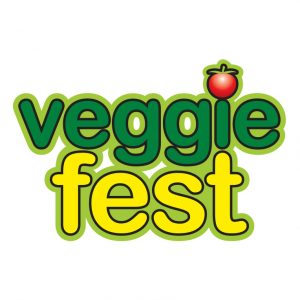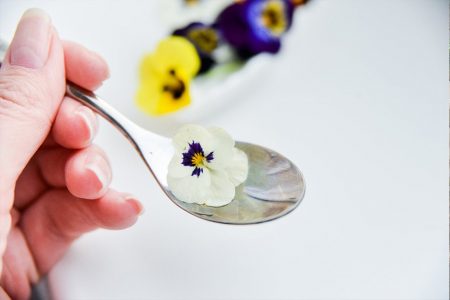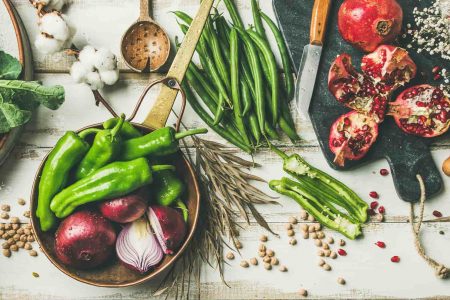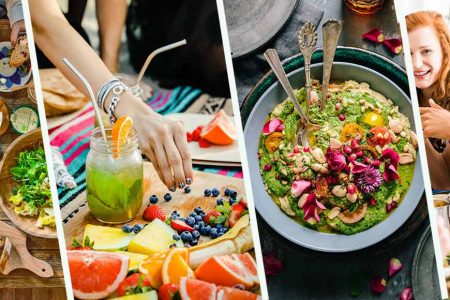Adding edible flowers and colorful petals to your soups, salads, fruits, and desserts invites magic into any meal. Their zippy taste complements sweet and tangy ingredients and delivers a sense of wonder.
Devour the Flower!
At lunch one day, my sister was served a bowl of flowers.
I had taken her to a restaurant. She ordered.
Neither of us suspected we would be transported to another world.
The small meadow before her was made up of clover, herbs, rose petals, and pansies.
Pansies!
Had we walked into a fairy kingdom that was posing as a restaurant?
Did the server mistake her for royalty and bequeath her the queen’s share?
I held my breath as the waiter flourished a little white pitcher and poured into the bowl a ruby nectar—tomatoes, peppers, cucumbers, garlic.
He must have said “Behold!” I can’t be sure, but what else could he have said?
He had just served my sister un bol de fleurs for gosh sakes. Or was it gazpacho con floras? I looked back at the menu. The words were in English, not Elvish. There was no reference to flowers.
I watched her take the first bite.
As I suspected, it tasted beautiful.

Ever since that moment, the magical possibility of adding flowers to meals took root in my being (blossomed forth, fructified—you get my meaning).
For thousands of years—and definitely since the Middle Ages—flowers have been used in meals. However, it is not often in this age that you find your dinner plate sprinkled with flowers or petals, either at restaurants or at home.
So why not give this ancient practice a reboot?
Not only do edible flowers add zing to lettuce and fruit salads, desserts and entrees, but they also add vitamins like C. Perhaps not in great quantities. After all, we’re not going to formulate a pharmaceutical pansy pill. Rather, what we want, and have always wanted, is a daily bit of Eden. What we need is the beauty and glory of heavenly flowers winking up at us from our salad bowl and dinner plate.
Before I gab on—and in case you don’t plan to read much further—please note: Only devour flowers known to be edible, organic, and pesticide free. AND: Many flowers that we can eat, our pets cannot. The list below is not exhaustive. There may be other edible varieties than the ones offered here, but these are safe and sound, with this caution: Although you may be happy to know that rose petals are edible, don’t eat any that come from a florist. Either grow them yourself or select from a guaranteed source. Remember to remove the stamens from your flowers (except for pansies) along with the white “heel” at the bottom of the petal, as both may be bitter and ruin the vibe of your dish.
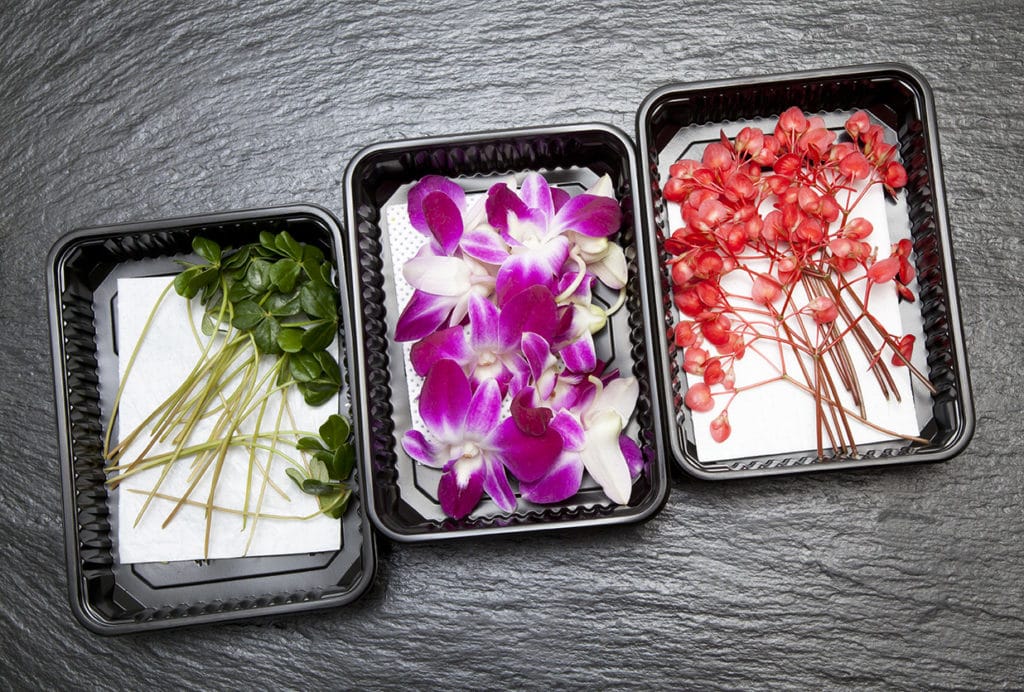
A Starter List:
Roses, roses, roses. Did you know that different colored petals boast different flavors? If a rose has no scent, the petals will have no taste. I’ve savored the peppery coral roses growing on my porch, but now I’m wondering what yellow, purple and white rose petals might taste like. Hmmm.
Rose petals can be sprinkled over anything and everything, found floating in cold drinks and garnishing cakes and fruits.
It’s common sense, but just in case you’re wondering, avoid any petals with black or yellow spots.
Miniature carnations, dianthus, taste somewhat like cloves. These are toxic to household pets, so don’t share your dianthus garnished tofu roast with your always hungry and willing to try anything pooch. They are beautiful additions to salads and desserts, too.
Alliums, or flowering onions, come in over 400 varieties. Some sources say 800 varieties, but any number over 400 is just quibbling. These gorgeous purple and blue florets—adored by bees—add a garlic zip to salads, so sprinkle on, my friend!
Pansies. You can eat the entire flower! They are often used to decorate desserts. Float them in your soup. Adorn your salad with pansy crowns. Don’t be shy. Their delightful, mustachioed faces are just too perfect to ignore.
Marigolds. These summer-long blooming flowers not only repel pests from your organic garden but can easily be grown in pots. The ancient Greeks and Aztecs used marigolds as medicinal and food. Like saffron, the marigold adds a brilliant color to rise dishes and salads. The different cultivars range from a spicy to a citrusy tang. Similar to marigolds, the calendula flower is often mistaken for the same. It, too, can be grown and sprinkled liberally over your meal.
Nasturtiums. The radish-like flavor of this garden favorite entices in a variety of colors from orange to red to yellow. Smaller flowers are tastier and can be used as garnishes, ripped, chopped or minced. Toss them into stir-fry, pasta, and salads (you can also add their leaves) or pluck them fresh off the stem and roll them around a pat of herbed goat cheese. For my vegan friends, nut cheese works just fine, too. Some nutritionists suggest that if you’re pregnant, avoid. Otherwise, gather handfuls while ye may.
Cooking, garnishing, sprinkling flowers and petals from the list above is guaranteed to enchant your family and any guests who sit down at your table. Enjoy the process, make it part of your practice, and devour on!
Try our Hibiscus Flower Tamales with Red Chili Sauce for a power-packed tamale filled with flowers.
Rose petals sprinkled on desserts add a touch of elegance. Our Pistachio Cardamom Cake Bites with Rose Cashew Frosting turn a gathering into a gala.
-K for the Veggie Fest Team

